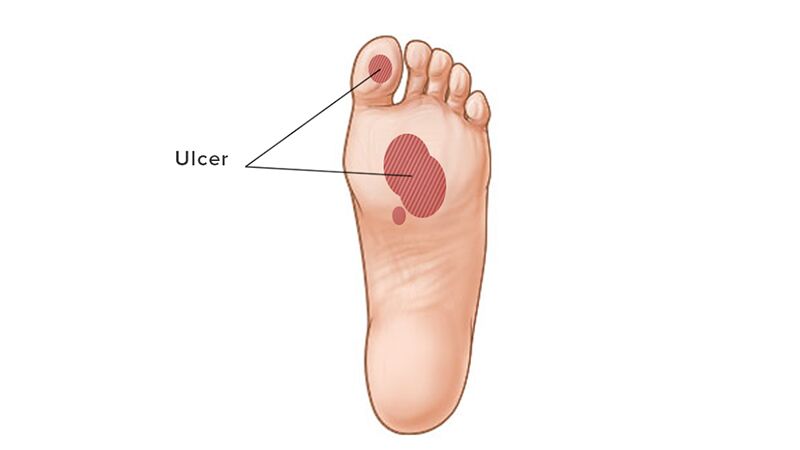Ulcers – Diabetic Foot Ulceration
Ulcers are open wounds which are either tough to cure or keep coming back after it heals. However ulcers happen because of several reasons, people with diabetes are more likely to get a foot or toe ulcer. A scrape, rift or perforation may turn into an ulcer, but in case that the patient couldn’t feel that he/she may not notice it’s there.
Ulcers might turn into infections, and sometimes amputation of the infected part of feet.
Usually ulcers are grievous, sometimes not. People with Ulcer might experience burning, inflammation and pruritus.
There are two kinds of ulcers: neurotrophic ulcers and arterial ulcers.
Ulcers look like circles and are different in size and color.

When it begins the patient might notice:
- Dry, ruptured and rough skin
- Appearing blisters and pimple
- Redness
causes of ulcers include:
- Neuropathy, a result of diabetes
- Cellulitis, an usual bacterial infection
- Trauma
- Weak circulation
- Deformation toes
- Putting much pressure on the foot
- Scraping
Diabetic Foot Ulceration | Symptoms
- Draining from the foot
- Eccentric inflations, inflammation, redness, and odors (scent)
- Observing black tissue (eschar)
- Sectional or complete gangrene
Most of the time, signs of ulcers are not manifest. So sometimes the patient can’t even notice the symptoms until they have gotten infected.
In case that observing skin discoloration, typically black tissue, talk to a heel surgeon in Dubai.
Treatment of Diabetic Foot Ulceration in Dubai
The initial treatment of diabetic foot Ulceration is off-loading (lift pressure on the foot).
Diabetic Foot Ulceration | Nonsurgical treatments are:
- Wearing special shoes for diabetics, casts, and foot braces
- Compaction packs
- Using shoe pads in order to prevent calluses
- Performing debridement
- Taking medicine such as antibiotics, antiplatelets, …
Note: foot infections are serious and dangerous complications. So immediate treatment is necessary.
In advanced stages surgical procedures will be required.



